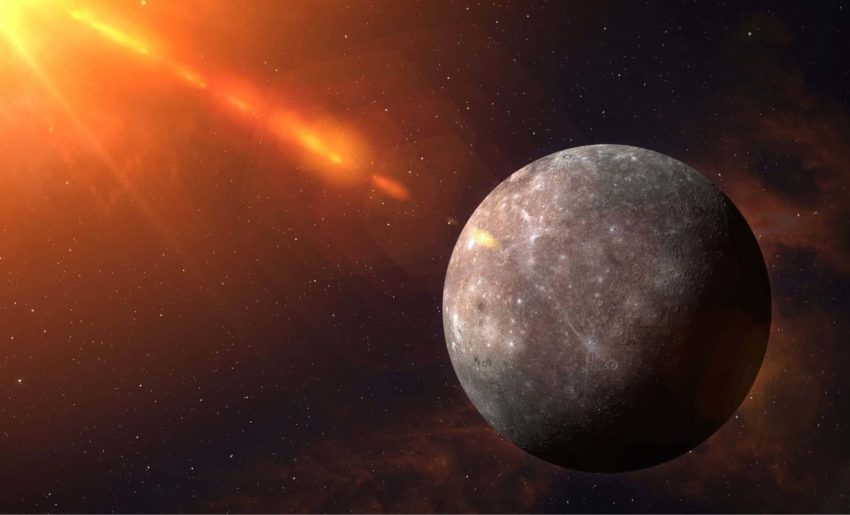A New Discovery in Planetary Science
A recent breakthrough in planetary science has led to the first-ever detection of lithium in Mercury’s exosphere. This discovery was made not through traditional particle observation methods, but through a novel approach that relies on electromagnetic wave analysis. The study, published in Nature Communications, was led by Daniel Schmid and his team at the Austrian Academy of Sciences. Their research outlines how ion cyclotron wave signatures hidden in four years of MESSENGER spacecraft magnetic data have revealed a transient presence of lithium on the innermost planet of our solar system.
Identifying Lithium by Its Magnetic Footprint
Mercury’s exosphere is an extremely thin atmospheric layer composed of atoms and ions released from the planet’s surface. Due to its low density, traditional detection methods struggle to identify less abundant elements. Until now, lithium had remained elusive—its presence inferred, but never directly confirmed. That changed when Schmid’s team employed a technique focused on “pick-up ion cyclotron waves” (ICWs), a specific electromagnetic pattern created when newly ionized atoms interact with the solar wind.
“During our survey [of MESSENGER’s magnetic field data], we identified signatures of pick-up ion cyclotron waves that could be attributed to freshly ionized lithium,” said Schmid to Phys.org. This method hinges on how ionized particles oscillate at frequencies unique to their mass-to-charge ratio, essentially creating a magnetic “fingerprint” that researchers can isolate. “The pick-up ions produce waves at characteristic frequencies, allowing us to identify their presence through their magnetic signatures,” explained Schmid. This approach allowed scientists to spot twelve distinct events over a four-year span, each lasting just minutes, in which these lithium-specific waves emerged.
Meteoroid Strikes as the Hidden Engine of Lithium Release
What made the lithium detections particularly compelling was their sporadic and short-lived nature. The researchers methodically ruled out slower mechanisms such as solar heating or solar wind erosion, concluding instead that high-speed meteoroid impacts were the only plausible trigger. When micrometeoroids slam into Mercury at velocities nearing 110 km/s, the energy released is sufficient to vaporize both the impactor and part of Mercury’s surface, creating high-temperature plumes that can eject lithium atoms into the exosphere.
“This discovery suggests that Mercury’s surface has been enriched with volatile elements through continuous meteoritic impacts, which also facilitate their release into the exosphere and space,” said Schmid. These impacts do more than deliver new elements—they activate and expel existing surface materials, releasing volatile compounds like lithium into Mercury’s space environment. “The detection of lithium—and its association with impact events—strongly supports the hypothesis,” Schmid noted. “It demonstrates that meteoroids not only deliver new material but also vaporize existing surface deposits, releasing volatiles into the exosphere and sustaining a dynamic cycle of supply.”
A New Chapter in Mercury’s Volatile History
This discovery contradicts long-held assumptions about Mercury’s formation. The planet’s unusually high density and massive iron core have led scientists to theorize that it formed in extreme heat, possibly after a colossal collision that stripped it of most volatiles. Yet MESSENGER previously detected elements such as sodium, potassium, and hydrogen—suggesting a richer and more complex geochemical history. The presence of lithium, now linked to external delivery and surface vaporization, adds another piece to the puzzle.
“Neither particle detectors onboard Mariner 10 and MESSENGER nor ground-based telescopes could confirm the presence of lithium, despite expectations of the existence of lithium based on the detection of other volatile elements,” Schmid emphasized. This underscores the importance of alternative detection methods in planetary science. Magnetic field data, long archived but underutilized, now reveals unexpected chemical complexity on Mercury’s battered surface.
Exploring New Frontiers in Planetary Research
The implications of this discovery extend beyond Mercury. By using innovative techniques like electromagnetic wave analysis, scientists are opening new avenues for understanding the composition and dynamics of other celestial bodies. The success of this method highlights the value of re-examining existing data through fresh perspectives. As researchers continue to explore the mysteries of our solar system, discoveries like these remind us that even the smallest elements can hold significant clues about the origins and evolution of planets.
